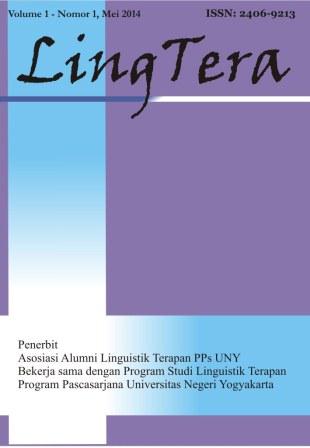The translation quality of speech acts on the label of product packaging
DOI:
https://doi.org/10.21831/lt.v7i2.39406Keywords:
Labels, translation techniques, speech acts, shifting, translation qualityAbstract
The translation of speech acts on product packaging labels was the object of this research. This study aimed to analyze the types of speech acts, translation techniques used by translators to translate label text, and to identify how these techniques affected changing speech acts on product packaging labels. A qualitative descriptive approach was used in this study. The data was presented in the form of utterances on packaging labels that included speech acts and their translations. Document analysis and focus group discussion were used to gather the data. According to the findings, the researcher discovered 94 different forms of speech acts. The translator used 14 different translation techniques in translating the label. Several translation techniques used in this study affect the changing of speech acts in the target language. Deletion, reduction, modulation, paraphrase, and compensation techniques were found to induce a change in speech acts. There were 12 data of the speech acts shifting. The cumulative score for the quality of the translation on the product packaging label was 2.75.
References
Angipora, M. P. (2002). Dasar-dasar pemasaran. PT. Raja Grafindo Persada.
Aresta, R. (2018). The influence of translation techniques on the accuracy and acceptability of translated utterances that flout the maxim of quality. Humaniora, 30(2), 176–191. https://doi.org/10.22146/jh.33645
Baker, M. (2018). In other words: A coursebook on translation. Routledge. https://doi.org/10.4324/9781315619187
Bungin, B. (2012). Metode penelitian kualitatif. Rineka Cipta.
Delisle, J., Lee-Jahnke, H., & Cormier, M. C. (1999). Translation terminology (Vol. 1). John Benjamins Publishing.
Fawcett, P. (2014). Translation and Language. Routledge. https://doi.org/10.4324/9781315760483
Gottlieb, B. H. (1992). Quandaries in translating support concepts to intervention. Hemisphere Publishing Corp.
Ma'u, J. A. R. Z., Fajaruddin, S., Lamahala, C. B. M., Fuadi, C., Perdana, S., & Aryanto, A. (2019). Submissiveness and resistance: Different paradigm between Indonesian language and English. LingTera, 6(1). https://doi.org/10.21831/LT.V6I1.23966
Molina, L., & Albir, A. H. (2004). Translation techniques revisited: A dynamic and functionalist approach. Meta, 47(4), 498–512. https://doi.org/10.7202/008033ar
Munday, J. (2016). Introducing translation studies. Routledge. https://doi.org/10.4324/9781315691862
Nababan, M. (2008). Kompetensi penerjemahan dan dampaknya pada kualitas terjemahan. In Pidato Pengukuhan Guru Besar Penerjemahan Pada Fakultas Sastra dan Seni Rupa Universitas Sebelas Maret. Kompetensi penerjemahan dan dampaknya pada kualitas terjemahan.
Nababan, M., Nuraeni, A., & Sumardiono, S. (2012). Pengembangan model penilaian kualitas terjemahan. Kajian Linguistik Dan Sastra, 24(1), 39–57. https://doi.org/10.23917/kls.v24i1.101
Nababan, M. R. (2008). Teori menerjemah bahasa Inggris (3rd ed.). Pustaka Pelajar.
Spradley, J. P. (2016). The ethnographic interview. Waveland Press.
Sugiyono. (2015). Metode penelitian pendidikan; pendidikan kuantitatif, kualitati. Alfabeta CV Bandung.
Susanto, A., Oktavia, Y., Yuliani, S., Rahayu, P., Haryati, & Tegor. (2020). English lecturers' beliefs and practices in vocabulary learning. Studies in English Language and Education, 7(2), 486–503. https://doi.org/10.24815/siele.v7i2.16970
Vinay, J.-P., & Darbelnet, J. (1995). Comparative stylistics of French and English: A methodology for translation (Vol. 11). John Benjamins Publishing.
Downloads
Published
How to Cite
Issue
Section
Citation Check
License
LingTera allows readers to read, download, copy, distribute, print, search, or link to its articles' full texts and allows readers to use them for any other lawful purpose. The journal allows the author(s) to hold the copyright without restrictions. Finally, the journal allows the author(s) to retain publishing rights without restrictions.
- Authors are allowed to archive their submitted articles in an open-access repository.
- Authors are allowed to archive the final published article in an open-access repository with an acknowledgment of its initial publication in this journal.

Psychology, Evaluation, and Technology in Educational Research is licensed under a Creative Commons Attribution-ShareAlike 4.0 International License.
Based on a work at https://petier.org/index.php/PETIER.









